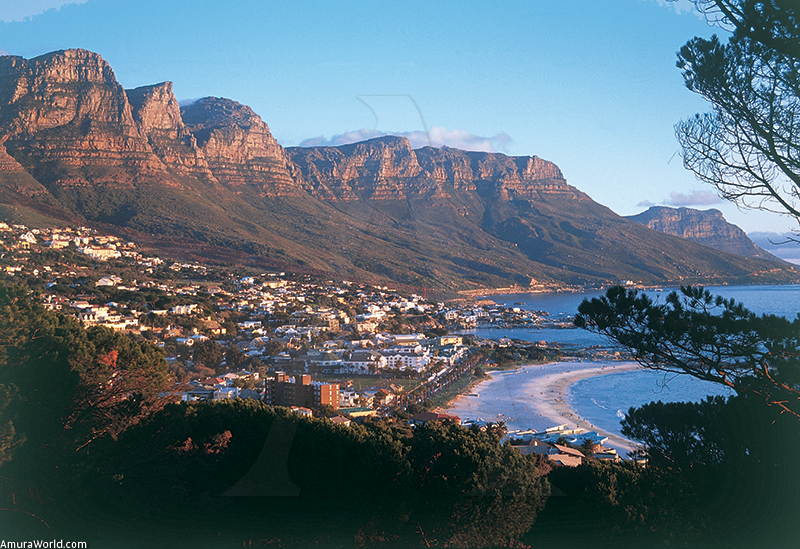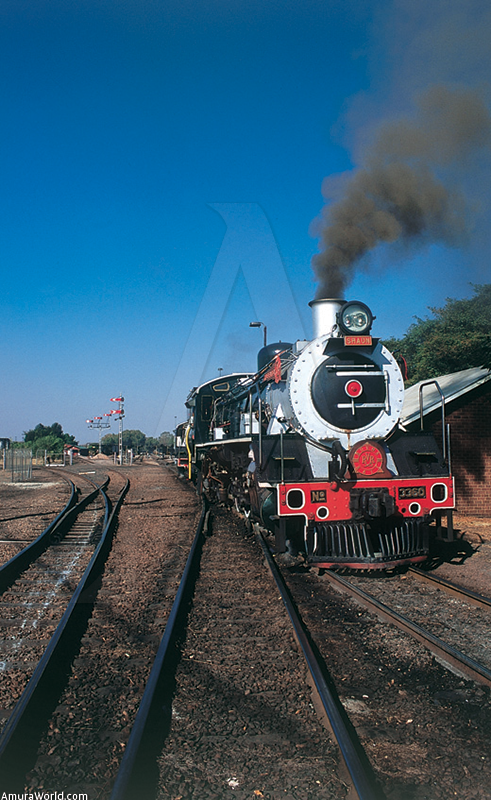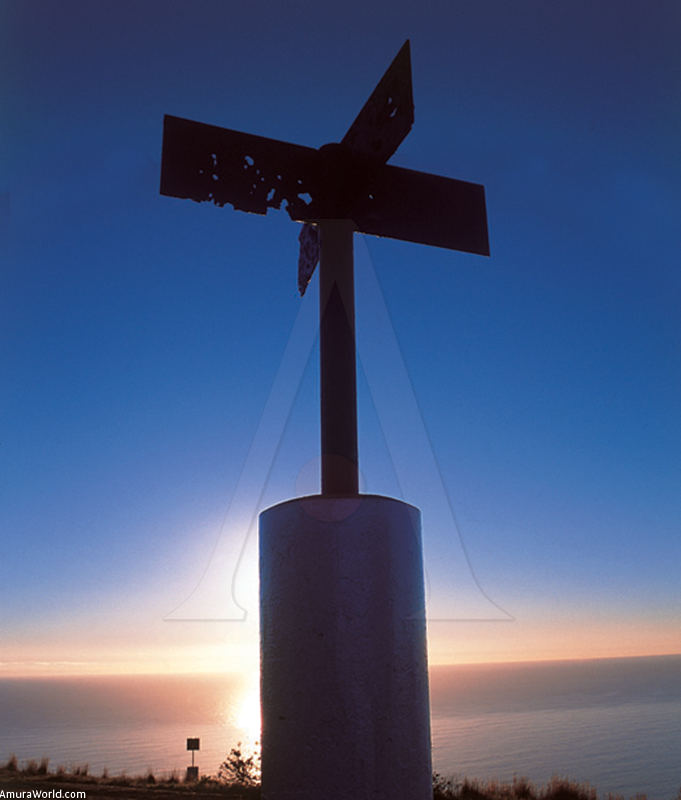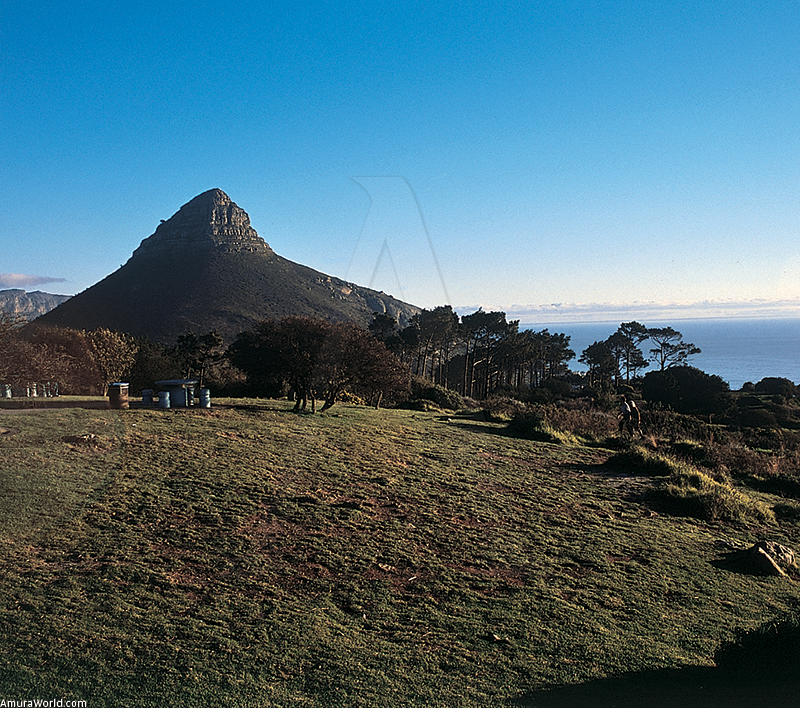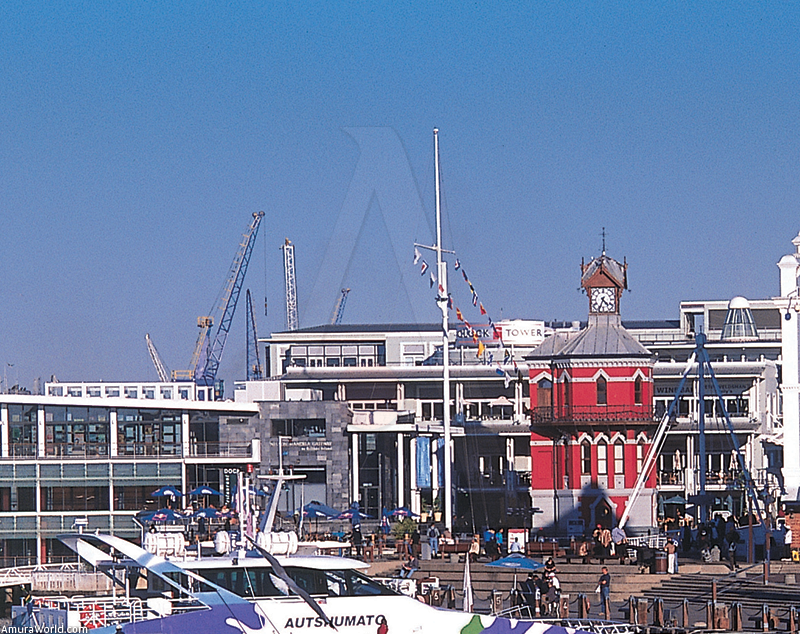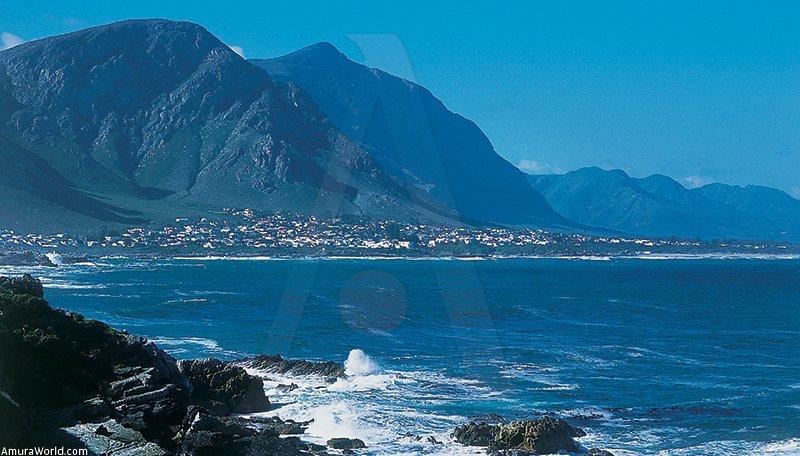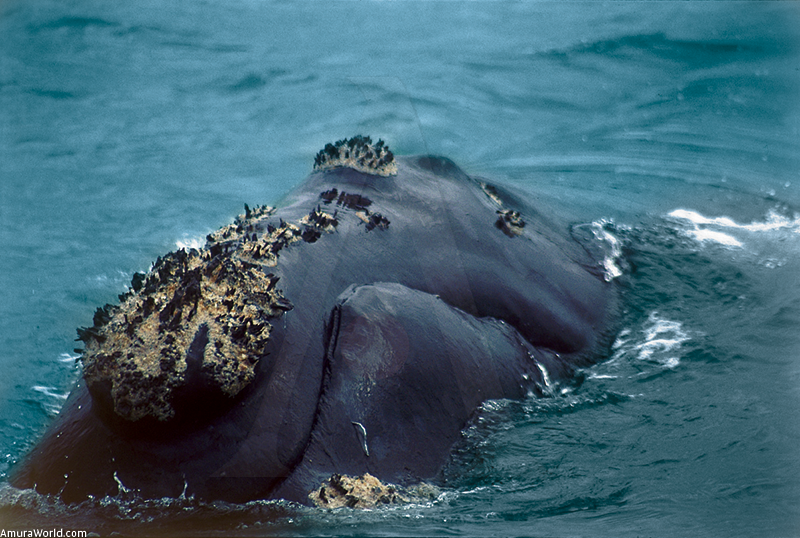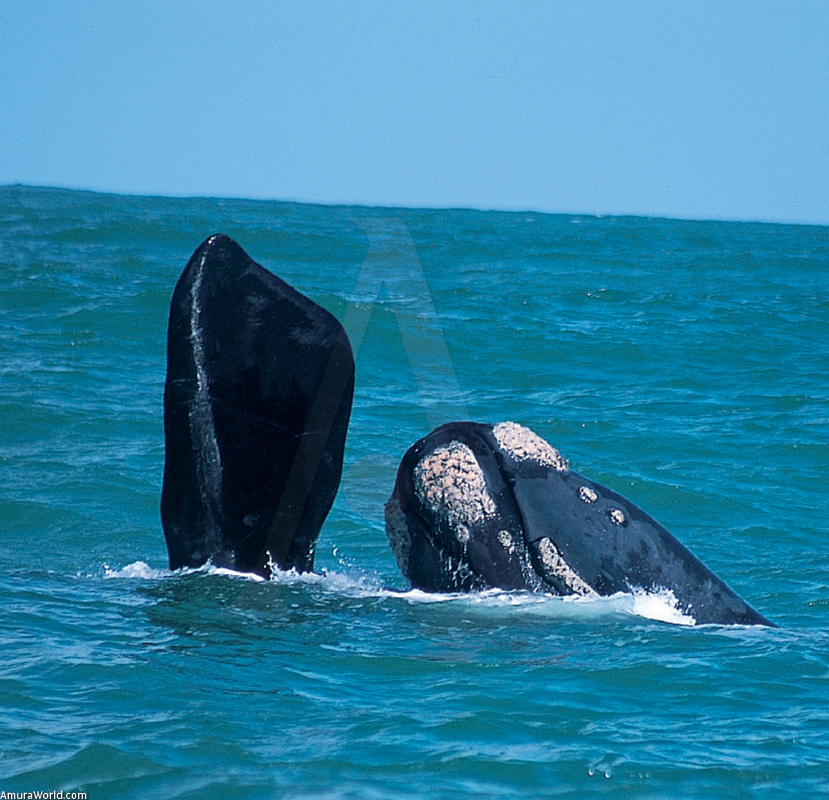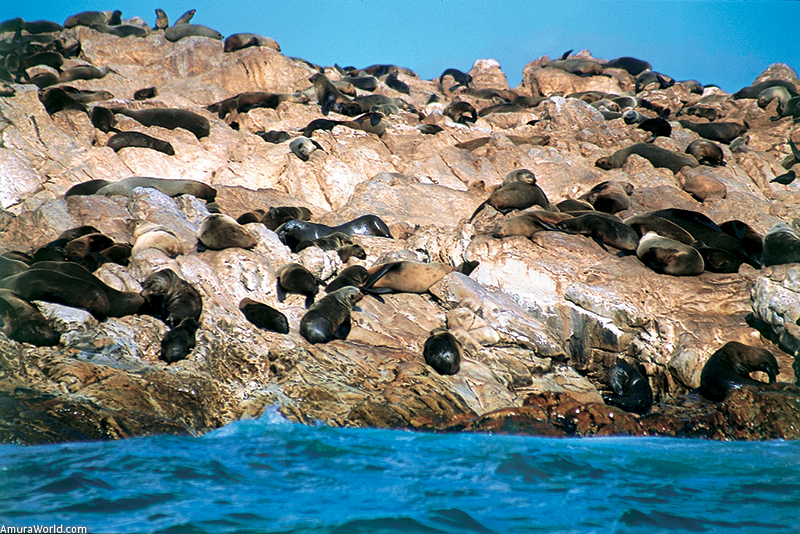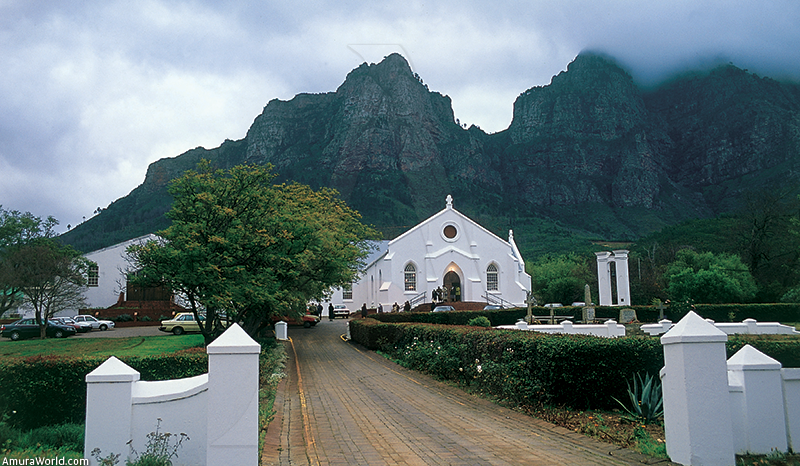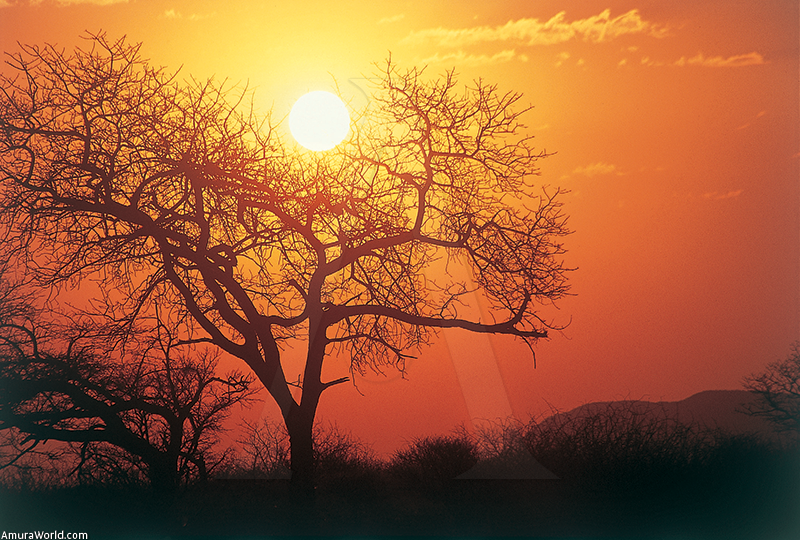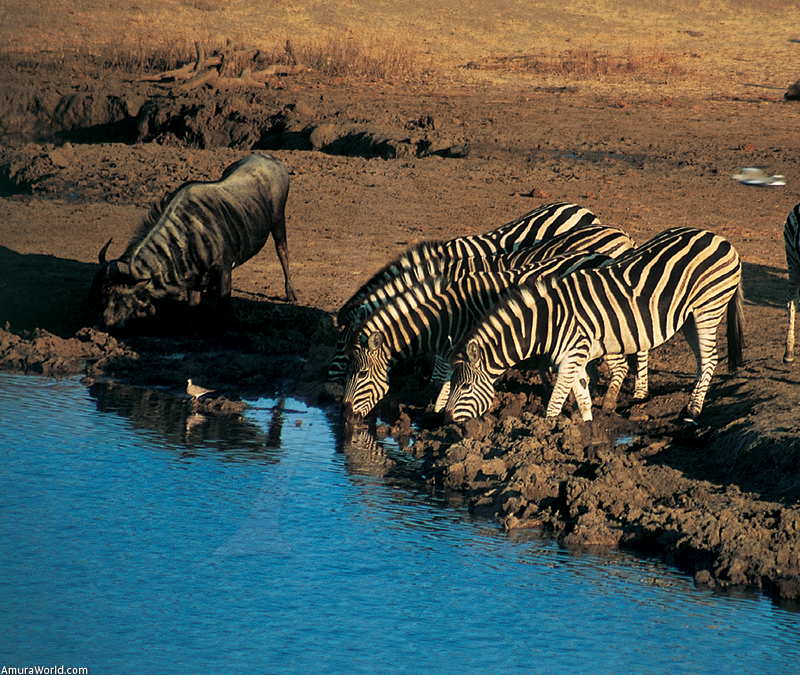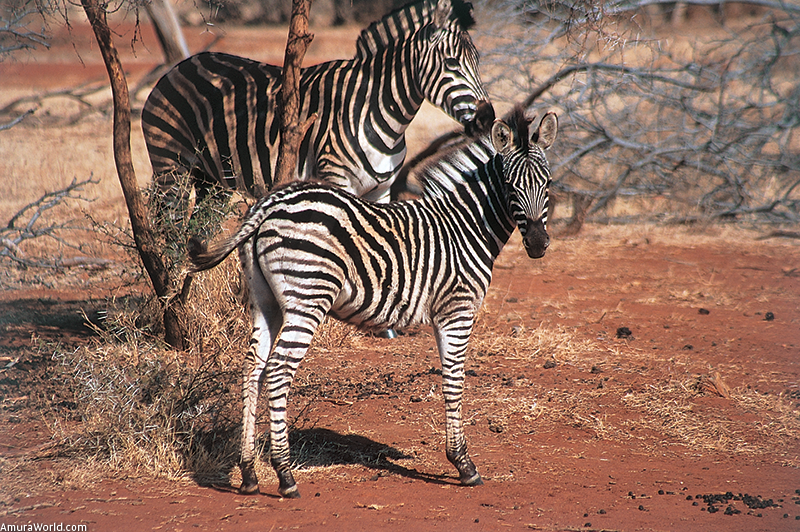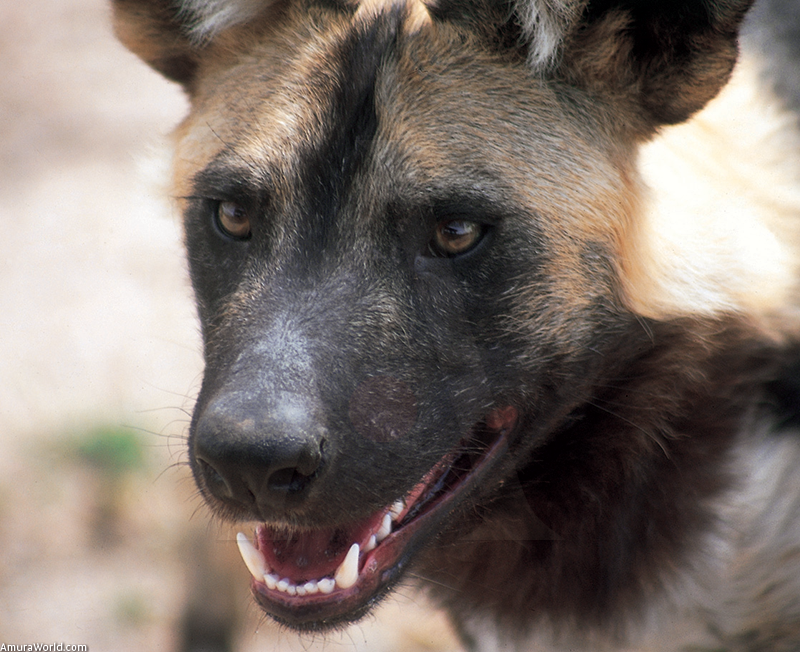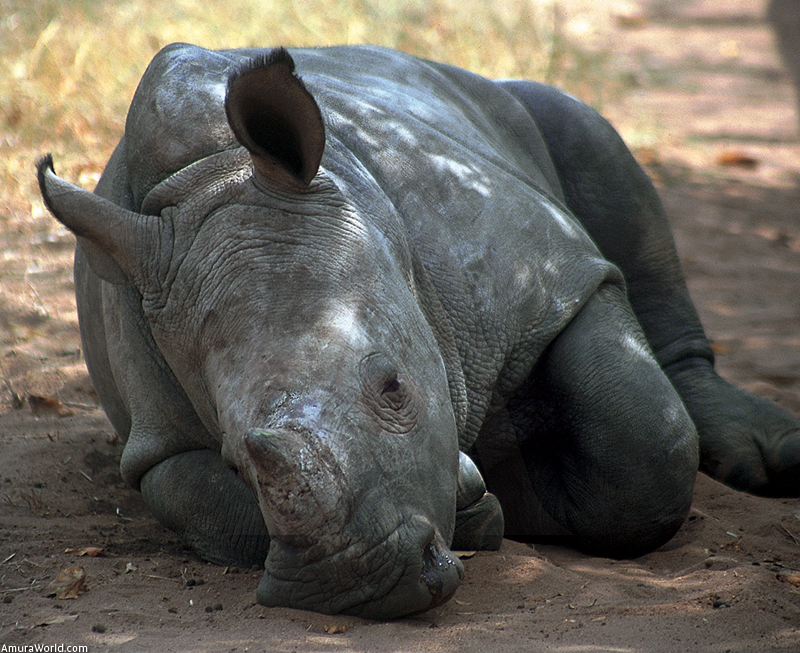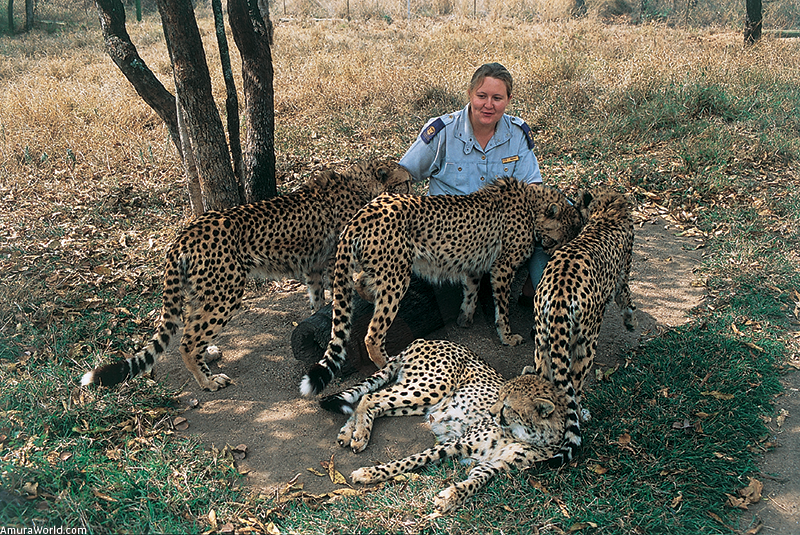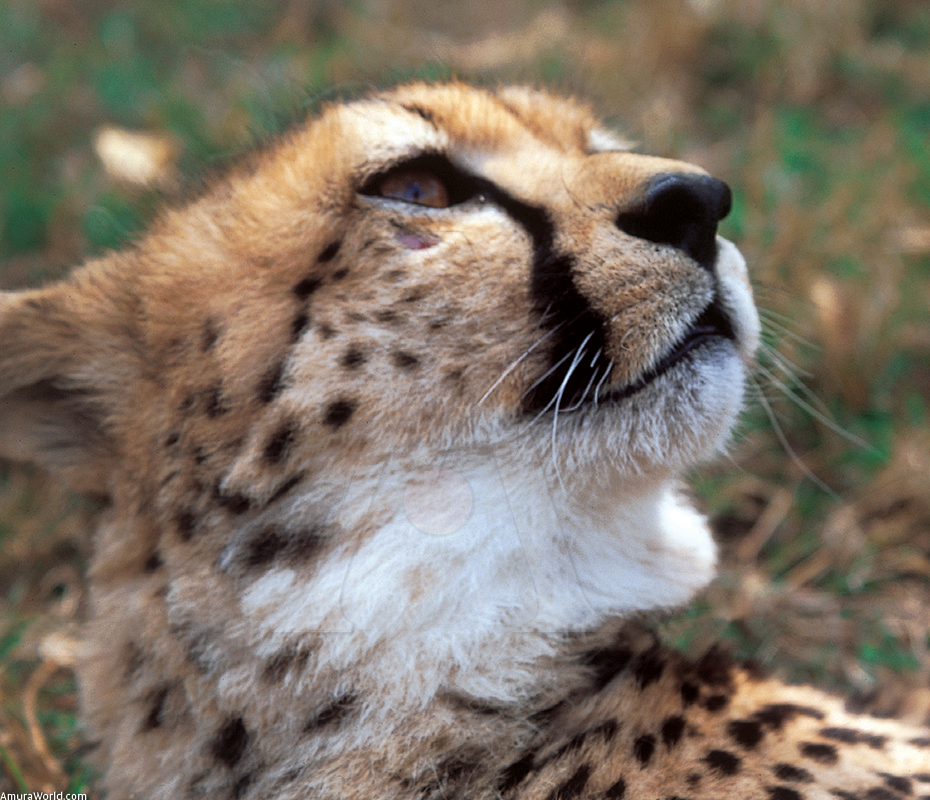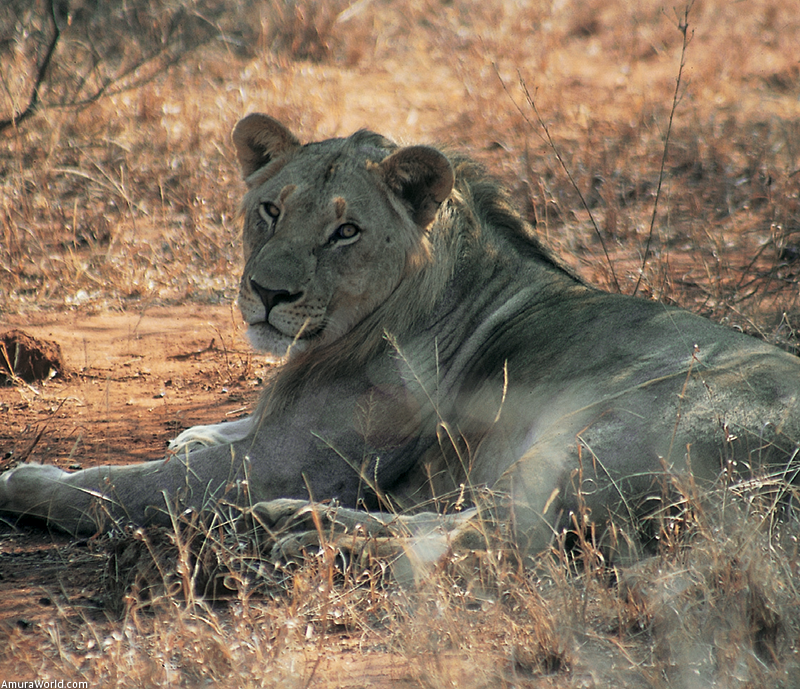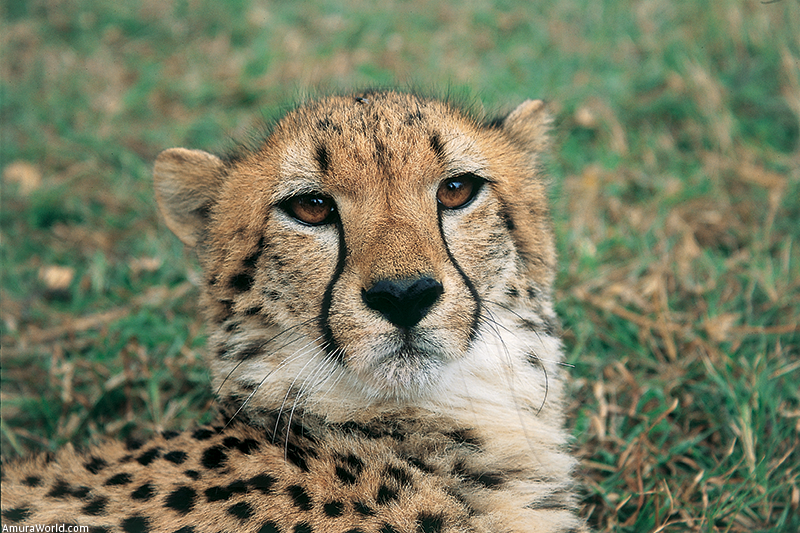At the southern tip of the African continent is Cabo da Boa Esperanga, a cape that is a challenge to sailors. Like a finger pointing to the South Pole, it is one of the most beautiful, dramatic and magnificent places in the world, where waves pound the cliffs or hide, far from the protected bays.
South Africa is one of the most beautiful countries, with a wide variety of scenery, tours and surprises. We had already covered the sea route between Cape Town and Plettenberg Bay and this time we decided to explore the peninsula and other charming spots around the country, to find out more about its natural attractions. In Johannesburg we discovered attractive shopping centers, residential neighborhoods, the gold mine and the modem downtown area that has been abandoned by businesspeople.
From Capital Park to Cape Town
We headed for Pretoria, the capital, hidden amidst green hills, to take Rovos Rail “The Pride of Africa,” the most luxurious train in the world. Each car has three suites, each with its own living area and bathroom. The restaurant, which has kept its wood décor, serves excellent gourmet cuisine accompanied by the finest South African wines. The bar is very cozy and the last car is ideal for spending the afternoon reading and enjoying the small outdoor terrace.
At 4 p.m. we left the private station in Pretoria, Capital Park, which is renowned for its colonial architecture, rode through Johannesburg at sunset, and started on a journey through the southern plains.
At 8 a.m. we arrived in Kimberley, where the trolley took us on a tour of the streets that evoke images of the “far west.” Kimberly is the world’s most important diamond mine, where some of the most extraordinary specimens have been found, and where all trade is carried out. Big Hole is the largest man made
excavation on the planet, although today the mines are underground. The museum tells the story of how, in 1869, a family chanced upon the first diamonds and exhibits originals and copies of the biggest ones.
We continued our tour by road, leaving the city and crossing the plain, where antelopes roamed, until we came upon our fabulous train waiting for us in this unique setting. Champagne and hors d’oeuvres awaited us, surrounded by nature, before we reboarded and followed our route through the southern plains.
Morning surprised us in the arid mountain region of Karoo. At 8 a.m. the train stopped in the middle of nowhere so that we could walk around the beautiful country side. We caught up with the train in Matjiesfontein, a small, charming town that has not changed in 100 years and that flaunts its old buildings.
Cape Town
After traveling 48 hours and crossing impressive settings of vineyards hidden between mountains, at the end of the day we arrive in Cape Town. This was an opportunity to go back in time to when train travel was a luxurious, elegant means of transportation.
Cape Tbwn, at the foot of Table Mountain (1,086 m /3,563 ft), where clouds get trapped, was founded by the Dutch over 350 years ago and was later occupied by the British. It is a beautiful city of contrasts that is divided into zones: the Historic Center, with its elegant neoclassic buildings and others with iron balconies; the Financial and Economic Center with its skyscrapers, and the Commercial Center on the port, with its high-end shops, restaurants, movie theaters and marinas (Victoria and Albert Waterfront). Dominating the city are the strange silhouettes of the peaks of Signal Hills and Lion’s Head, both of which afford magnificent views.
Cabo da Boa Esperanga
In 1487, Bartolomeu Dias, a Portuguese sailor, was the first to sail around this cape, where the winds and currents drive boats berserk. The cold Benguela current rises from Antarctica to meet the warm Agulhas current that descends from the Indian Ocean, creating circular currents and provoking strong winds. It was a great challenge but, in the end, it was an extraordinary experience, both by sea and land.
Chapman’s Bay
The clear morning was inviting, the calm sea painted the horizon and the sailboat felt confident, driven by a southwesterly breeze. After leaving Robben Island, we passed through Clifton, a residential area with beautiful beaches and fabulous mansions, where the marina provides good shelter. Once we reached Camps Bay the wind began to blow stronger, bounc- ing against the spectacular mountains known as “The 12 Apostles,” south of Table Mountain. These mountain formations plunge dramatically into the sea, dominating a narrow strip of white sand. It is a place that is frequented by whales, and the landscape is charming.
Passing Duiker Point we came to Chapman’s Bay. with white sands bordered by pines or pastures. Within it is Hout Bay, completely enclosed and pro- tected, with its small town and fishing village. Noordhoek, in the middle of Chapman's Bay, has fabu- lous waves and is a favorite of surfers, especially at low tide, but very dangerous for swimmers.
Towns, Capes, Bays and Marinas
The side winds blew stronger and stronger, the sky was getting cloudy, and we arrived at the end of the bay, passing the small fishing village of Kommetjie, famous for good surfing, long waves and shellfish. The Slangkop lighthouse marks the beginning of the wildest area, the Cape of Good Hope Nature Reserve, where waves attack the cliffs and winds lash against the grazing land and the feathers of the ostriches feeding near the white sand beaches and the turquoise sea
Here, the trees are like shrubs, the vegetation is subjected to the violent weather, fynbos (a flower that is native to the region, with petals in tones of pink or orange) abound, and baboons search for food while avoiding the antelopes. The waves were very high, with deep tunnels and, because of the headwinds, we decided to lower the sails and continue with the motor. The landscape was impressive, with high mountains that plunge into the sea, dominated by two lighthouses. There, surging before us, was the greatly feared Cape of Good Hope. This is the end of Africa, where the Earth looks south to perpetually ice- covered Antarctica, although Cape Agulhas, to the east, is actually the southernmost point.
Right after we passed jagged Cape Point, we entered False Bay. The winds died down, the sea became calm, almost by witchcraft, and the sun was reflected on the mountains to the east that frame the bay with Cape Hangklip. We sailed toward Muizenberg, where we would be leaving the boat, but we had suffi- cient time to explore the eastern coast of the peninsu- la. outlined by the mountains and enlivened by the towns. There was a light southerly breeze, which made for calm sailing. We stopped in Smitswinkel Bay to walk on the beach and found some abalone fishermen who where selling their catch.
When we arrived at the exceptionally beautiful Simon’s Town marina, we docked at the wharf to ex- plore this charming place, with its air of yesteryear, enlivened by restaurants serving the finest seafood, shops and a fishing village. We visited nearby Boulders Beach, which a large colony of penguins has been ca- lling home much before the arrival of man.
The coast is a long extension of white sand beaches and cliffs, and open bays that shelter fishing villages, like Fish Hoek. Planes stretch out along the foot of the moun- tains, creating an immense beach that continues up to Somerset West. We left the sailboat in Muizenberg, a sleepy port happy to have sailed around the Cape of Good Hope, an emotional experience that was complicated by strong waves and gusts of wind Awaiting us were fabu- lous accommodations in The Cellars-Hohenort, an ele- gant mansion hidden in an exceptionally beautiful garden at the foot of Table Mountain.
Grootbos
After two hours on the road we arrived at the small town of Hermanus and, from the cliff that is home to the mystical Hotel Marina Hermanus, we could see southern right whales a short distance away.
We settled into Grootbos, a private reserve on a hill that dominates Walker Bay. The climate is similar to the Mediterranean, and the lodge affords an excep- tional view of the long, white sand beach and the mountains that protect this unusual world, open to winds from the South Pole.
In Grootbos we explored the natural setting, including the indigenous flora, that includes a great variety of fynbos and proteas, and that has been com- pletely preserved. On the beach we visited the caves that were inhabited by human beings many years ago, and we could see whales swimming nearby. Grootbos invited us to enjoy an excellent dinner in front of the fireplace, in perfect harmony with nature. Mr. Lutzeyer, the proprietor, runs a gardening school where people can learn about the natural plants of the region and use them in the gardens of their homes.
Gansbaai is a real fishing village, imbued with the winter sun and the peaceful gulls. There, we took the Dyers Island Company zodiac to sail out to find the whales, who approached the boat blowing noisily when they come up to breathe: an impressive sight.
We reached Dyers Island, which is home to a colony of marine birds and penguins. A small island has been taken over by a colony of seals, noisy and constantly moving around looking for fish or playing in the rough waters. We came upon three small boats, with cages tied up next to them that take tourist to see the white shark. They tempt the shark with bait and the person in the cage enjoys a real show. We saw how the shark approached, swam under our zodiac, scraping the rubber, its impressive silhouette bigger than the boat. Beautiful and dan- gerous, the animal sailed around us, making intense, strong movements.
Return to Cape Town
Returning to Cape Town we visited the region of the vineyards, hidden amidst the high mountains where baboons play, and adorned with the towns of Stellenbosch and Franschhoek, with their art gal- leries and fine restaurants. The Dutch-style man- sions, white and elegant, appear over the cliffs in the midst of the vineyards. It is a truly enchanting region that invites visitors to enjoy its excellent wines, on tours that take them from one wine cellar to another.
The plane flew us northeast, to the small airport in Hoedspruit, where Shawn, our ranger, awaited us to take us directly to the Kapama Private Reserve, at the edge of Kruger National Park, where we stayed at fabulous Camp Jabulani. It is a beautiful lodge, with elegant living and dining rooms decorated with African art, armchairs covered with zebra skins, statues, paintings of animals, an immense fireplace, buffalo horns, twisted tree trunks, straw baskets and ostrich eggs. It was an invitation to relive the novels of the European farmers in Africa in the 19th century, and one expects Hemingway's ghost will be recounting his hunting adventures over dinner. A hanging bridge crosses the dry river to the six magnificent suites with a private swimming pool.
Lions roar from afar, monkeys screech and elephants bellow. The adventure begins. Crossing the savannah by car, we came upon lions, zebras and antelopes. Awaiting us at sunset, in the middle of a field, was an improvised “camp,” lit with torches and with an elegant table set with champagne and hors d’oeuvres, and 13 tame elephants. It was like living a dream within a dream.
Twelve of the elephants had been recently rescued from an uncertain future in Zimbabwe, where the poli- tical situation has caused people to kill them in order to eat. The other was Jabulani (which means Joy), seven years old, who has been raised on the reserve. This enchanting little elephant already had a story to tell: when it was three months old he was with its mother in the pride. While traversing a muddy path, Jabulani got stuck. Its mother and the other members of the pride tried to rescue it by pushing it, but desperate, with their heads lowered, they were forced to abandon him. Jabulani, who was finally rescued by a man and brought up on the reserve, is a spoiled little elephant, who always wants to be at the front of the pride and who understands 80 words. Riding on these magnifi- cent creatures we crossed the bush at night while observing gazelles and hearing the roar of the lions.
Kapama Reserve
In this reserve, created by Lente Roode, we visited a rehabilitation center for species that are in danger of extinction, where they mainly study cheetahs and wild dogs and where you can see them close up. We were able to pet the magnificent cheetahs. We spent three fabulous days there observing the wild animals and living amongst some of them. The highlight of one of the days was finding a leopard that was begin- ning its nighttime round.
It was difficult to leave Camp Jabulani, but two planes later we touched down in the Madikwe Game Reserve, in the northwestern part of South Africa. A mag- nificent reserve that borders Botswana, here we found rhinoceros, lions, elephants, giraffes and antelopes.
Our surprise and amazement were intense when we discovered our fascinating home in the reserve: Mateya, a lodge created for the sophisticated traveler who wants to enjoy the experience of a luxurious, magical safari. Five fabulous suites, with a private swimming pool, are hidden on a small hill. The lodge is decorated with capti- vating bronze sculptures, realistic paintings of animals, and African wood and bronze antiques. Mateya is a true love story between nature and sophistication
Leaving for the bush with our ranger and tracker, we saw some lions in pursuit of their prey and others sunning themselves on the top of a hill waiting for some antelopes to come near. We also saw several rhinoceros, giraffes, zebras and monkeys. Each time we went out the adventure was different, and the three days spent in this small paradise, in addition to affording us close encounters with the wild life, invited us to live the life of a novel, with unforgettable moments of luxury and perfection. South Africa is a very unique country, filled with contrasts and of refined sensitivity. Here, elegance is bound- less and the beauty of the surroundings satisfies the most sophisticated tastes. For sailors, it offers majestic coastlines and its reserves welcome urbane travelers who have a chance to relive days of old in incredible luxury.
This trip has been one of the most extraordinary I have ever taken. It was as if everything magical I had ever dreamed of became a reality in the blink of an eye. I had always fantasized about Africa with its extraordinary encounters with animal. And there it was, in the midst of luxurious, sophisticated camping, relaxing around a bonfire, listening to the roar of the lions during the night The reality of the experience was this, and more. Real life surpassed fiction and the southern coast has conquered me forever.
Reserve for Cheetahs and Animals in Danger of Extinction
Kapama Private Game Reserve, on the edge of Kruger National Park, in the province of Limpopo, is a fascinating private reserve. These lands belonged to Lente’s parents. Now the wife of Johann Roode, she has been coming here since 1950, when her family bought this property. When Lente was six years old, neighboring farmers killed a female cheetah and she cared for the orpha- ned cub. Lente called it Sebeka, brought it up and es- tablished an extraordinary relationship with the little animal. From that moment on, she developed a wonderful bond with cheetahs. When Lente married Johann Roode they bought several farms with the idea of establishing the Kapama Reserve, which now covers 13,000 hectares (32,123 acres). Lente has created a rehabilitation center for species on the brink of extinction and they are also doing research on cheetahs, wild dogs, lions and rhinoceros, among other animals of the region
Hoedspruit Endangered Species Center is a mar- velous space dedicated the protection of endangered species. It is open to the public but guests staying in Camp Jabulani receive special treatment. In the open spaces we observed wild dogs, a strange and rare ani- mal. We were also lucky enough to see cheetahs, the swiftest, most beautiful felines. We went into one of the cheetah shelters and touched the animals that approached us. It was an unforgettable experience.
The cheetah is a very dignified animal. It is so powerful and elegant that just being near it pro- vokes unimaginable, extraordinary sensations. We also visited Roger, a recently rescued orphaned rhino that lives with a sheep.
Info
Camp Jabulani
Kapama Private Game Reserve
T (27 15) 793 12 65
F (27 12) 804 39 84
www.kapama.co.za
This email address is being protected from spambots. You need JavaScript enabled to view it.
This email address is being protected from spambots. You need JavaScript enabled to view it.
www.kapama.co.za
Texto: Patrick Monney ± Foto: Patrick Monney

